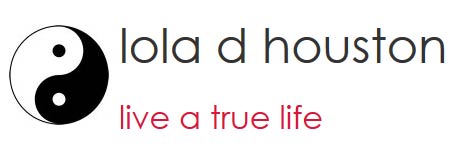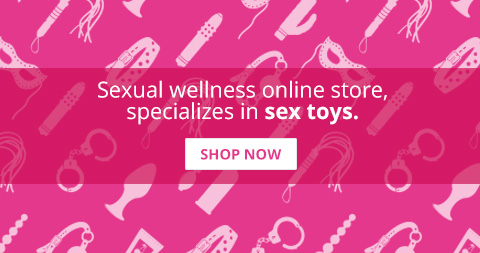Lola D Houston is an inspirational sexual lifestyle coach who offers fully personalised teaching, workshops and counselling services to individuals and couples. Lola D Houston helps individuals and couples find deeper meaning through the personal development of self-awareness, love, empathy and compassion. Lola is one of the very first sexual lifestyle coaches in the community who openly identifies as a transwoman. Her teachings allow us an insight into how people can develop the skillset to understand who they are and what they want as an individual. Lola truly believes you can:
- Unlock your power of no
- Give and receive with a willing heart
- Learn consent as agreement
- Deepen your relationships and love
This is a VIP Interview with Lola D Houston the CEO and founder of Live A True Life. It is a truly inspirational read that speaks in depth about the importance of saying “no”. Lola D Houston’s looks into consent as a form of agreement, alongside the differences between the answers of okay, no and hell yes! Consent is an important topics to talk about to raise awareness alongside the community speaking up about sexual harassment and assault cases especially with it reaching an all time high in the media. This VIP interview also looks into how to say no without feeling guilt or ashamed and how and why people can speak up about sexual assault and harassment in a safe environment.

Tell me about yourself
I’m Lola D Houston, and I am the sole force in my little enterprise, Live A True Life. I’ve been a teacher for almost 20 years, and for the past 15, have focused on adult audiences in relationships, sex and sexuality, gender, BDSM, touch and consent. My focus is strongly on consent these days, and my client model draws upon the wheel of consent as a central approach. At present, I work with individuals, couples and groups (including larger companies and institutions). At the individual and couples level, I’m a coach and counselor in the broad areas of relationships, sexuality and gender. With groups and organizations, I offer workshops, education and training in the subjects of language, appropriate behavior, attitude, gender and consent.
What inspired you to develop coaching, counseling, education and training at Live A True Life?
My first “moment” was during a 6 day training in Urban Tantra. I was teaching a lot of workshops at that point in time, and was actually paid for some of those (gasp!) and they involved sex. When the time came to share our work, I shared this to the small group, and they replied with:
“So, you’re a sex worker?”
Stop! Think! That flash of recognition when I said to myself
“Yes… I … guess I am!”
That moment, in conjunction with the mission statements we developed, led me to recognize for the first time that I loved that kind of work, loved opening hearts and minds and eyes. The next major moment was a sequence of events: a beloved partner was raped, and I went to New York City for a training in the wheel of consent. It was a deep and powerful experience, and clarified what I really loved doing, what I was good at, and really wanted to do. It took many more years to move from concept to something I am actually doing, and not just thinking about doing.
What inspires you?
Openness in mind, strong value systems (I fell in love with a partner and only a year later realized I’d fallen in love with their values), really good cooking (I do that, so I’m picky!), clear, strong touch, and impeccability of words. I’m deeply inspired by music (many different genres) on many levels, and also by the outdoors, particularly really big mountains.
What is consent?
Consent is complicated! The etymology of the term is a problem for me: consent has meant, and still does mean for most people, the idea of permission. “I consent to have you till this soil” It essentially has one person giving their blessing (permission) to another to do, have or hold something. As a result, the “permission” definition has taken root and only recently have we begun to be see consent as much more than that. This older form of consent also carries a lot of implicit meaning, including materiality and property ownership – a large problem in many societies today!
Can consent be a form of an agreement?
To me, consent is, at its core, agreement. This is also very complex, because it is agreement borne from an iteration or exchange by both parties. Both sides actively participate, both sides actively negotiate, and ultimately both sides have total freedom to choose, and thus to accept. A vital part of this process is the ability to really get the idea of “yes” and “no”, to be able to say yes and no and know that one means it, that it can be fully trusted . And this yes and no is tied to “okay”, the place where nearly everyone lives the majority of their life. “Okay” is a fraught position. Does it mean “yes”? Does it mean “no”? If the three terms – yes, no and okay – are put on a line with yes on the far left and no the far right, then “okay” occupies the entire vast distance between them. How far into “yes” does someone’s “okay” lean? How far into “no”? Where exactly is that line between “okay” and “yes” or “no”?
Thus, really learning consent is step-wise process. We must first understand “yes” and “no”, and to do that, we have to know what it is we want (itself a frequently difficult question for which we may not have an answer). To get this, learning what giving and receiving really mean is key. Once understood (and it’s most powerful resonance is in the body, not the brain) then we can approach “yes” and “no” because now we can begin to articulate not only what we do want but what we do not want and stick to that answer. The result: we can trust the yes and no of the other (a partner or spouse) and then feel good about the actions of giving and receiving that might follow. Consent, when looked at this way, is a pretty straightforward process but one that takes some really hard work to understand and put into practice. To be clear, then:
Consent, at least in the realm of sex, relationships, touch, play, kink and many other forms of interpersonal interaction can only be agreement.
What is the power of “No”?
This is a recent “aha” for me in work with clients, even though I’ve known about it for a long time. What the power of “no” means is that the person who can really, truly, deeply assert and own their “no” experiences a powerful kind of freedom. This is the result of both learning to say “no” clearly and recognizing it’s mirror: “yes”. When we learn to say no to someone, we’re also mindful that it might hurt or be uncomfortable for that other person. Who wants to disappoint a lover? It’s important to notice that “no” becomes a little easier as the social distance between the two people increases: a server in a restaurant that you are in, for example, is unlikely to be offended if, when they ask “would you like wine with your dinner?”, you answer “no”. We don’t (usually) know the server, so there’s no personal connection or stake beyond basic human respect. Move a bit closer socially and it changes: you’re at a social dance, and someone you know asks you to dance. A “no” here is, of course, fine to give as a response, but one might well pause before giving it, thinking that perhaps this person would be a bit hurt if you said “no”. Do we move on and dance again or struggle with an answer? Moving still closer, a lover asks if you’d like to go out on Saturday night. A “no” here could very well be uncomfortable depending on the circumstances, so we often move to “okay” even if we want to say “no”. Learning that we can say “no” to those we know and love frees us. It also gifts us with the ability to say a clear “yes”, and when both people understand this dynamic, that “yes” is really, really sweet.
When can people say “No”?
The answer is whenever they want to. It’s a matter of choice. Of course, there’s almost always more involved: social context, necessity, personal loss or gain. Perhaps more important is whether or not we say “okay” when we want to say “no”. To help resolve these kinds of feelings, it can be really helpful to ask this simple question: who is it for? When we truly know who it’s for, then the “okay” can make an appearance as a result of a full, open and willing heart. And, similarly, knowing who it’s for can often lead us to feel stronger and safer in saying “no”.
What happens when someone wants to change their mind?
Changing one’s mind is an integral part of the whole “yes” and “no” process. If we can’t ever change our mind on something we choose, we’re either going to be very, very careful about saying anything at all, or we’re going to live a life with a lot of regrets. And, changing your mind really works well when the yes and no is crystal clear and trustworthy.
In some cases people are made to feel guilty or ashamed for saying “No”.
How can people place up boundaries without feeling guilty or ashamed by the other person’s negative response?
Part of the problem here is that saying “no” is often taken as a personal slight, and as a result, most of us are deeply conditioned to avoid it: don’t hurt other peoples feelings! It’s not a matter of establishing a boundary in the usual sense. The “boundary” we need to set here is internal to us in our choice TO make a choice and say “no” if that’s what we want to say. It means we need to understand and honor our own limits. Learning to not avoid difficult feelings is part of getting to and embracing the power of “no”. And it is something we all CAN learn to do and embrace. Sometimes the person receiving the “no” is going to have a negative response. If that response is personal (as in “something is wrong with you”), the question we might then ask is whether or not this person is someone we even want to deal with (or be in a relationship with). Some situations may not be under our control: saying “no” to a supervisor is its own challenge. But in the context of interpersonal relationships, particularly intimate relationships, “no” should not leave us feeling shame or guilt. If it does, we might well wonder how (or even if) we want to be in a relationship with that individual. Part of the challenge here is that, in the ideal situation, both sides fully grasp this power of no to start with. Both sides need to “know the rules”, so to speak, and understand that the “no” that is heard is not personal.
How can people speak about sexual assault and harassment in a safe environment?
This is a very context dependent situation. I’d say that nearly all work environments would require the help of a human resources person to navigate a response. Not all companies have that, and not all companies have clear guidance around sexual harassment and sexual assault. It’s important that, as workers, we have some knowledge of, or at least know how to discover, the underlying legal framework that might help us. Assault is more likely to be codified in case law and thus may be easier to navigate. Harassment, on the other hand, is not so clear cut, and might require many more steps.
In other contexts – relationships, friendships, family – speaking up is vital and can be very difficult to do. One good first step is finding a neutral third party – a close friend, a well-known acquaintance, a clergy member – all of these might be good listeners. If you are seeing a therapist, that’s another avenue. A doctor may or may not work well. Some of that depends a bit on the nature of the violation – some professionals are mandatory reporters and might feel obligated to defend you in a different way that could be uncomfortable. It’s also important to distinguish between harassment and assault. Assault constitutes the “marquee event” – more easily framed in a legal context when a line is crossed, although it’s important to recognize that even with legal protections, there are no guarantees that resolution can be found. Harassment, on the other hand, is that constant drumbeat of “paper cuts” – actions and behaviors that take place every day. Speaking up here can be a very challenging process.
Why should people speak up about sexual assault or harassment that they have experienced?
First and foremost: speaking up might help us to preserve our own sanity. It’s also a key part of recovery from any trauma – say it, name it, don’t hide it and then we can move through it. In addition, the more we speak up about it, the more we help others find the courage to say something. And, the more we offer up our own experience as a model for being strong and acting in a responsible manner, the more likely someone else is to feel a little safer in saying something. This is not to suggest in any way that one is not being responsible by not speaking up – it’s a VERY personal matter, and is so often extremely painful. We must always choose the course that is best for us in that instance and not feel guilt. There is no single solution.
What services do you provide?
I offer coaching and counseling in the areas of relationships, sex and sexuality, gender, consent, touch and play to individuals and couples. I also offer training, workshops and education for groups, organizations and companies that are trying to better manage the workplace environment and foster a deeper understanding and appreciation for safety, respect and the ability to be truly open and welcoming to everyone.

Meet Elaine, our full-time sex blogger! With a background in women’s lifestyle blogs, she brings expertise to Adultsmart and runs Good Girl Guide too.








Leave a Reply